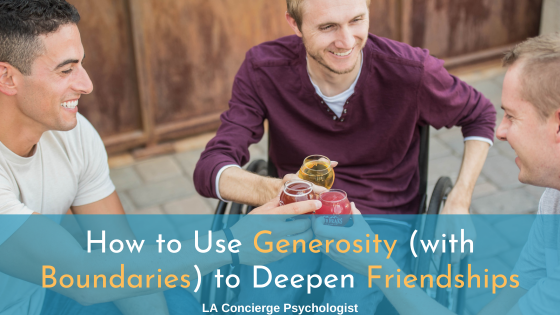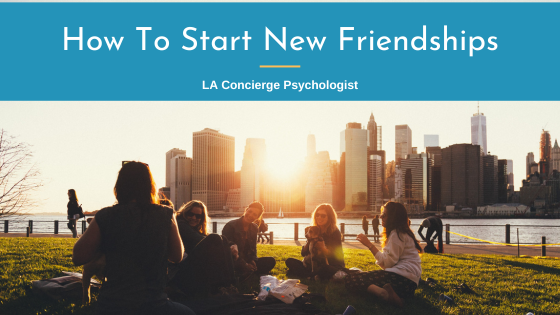This three-part series on the neuroscience of teenage anxiety was inspired by Catherine Pittman and Elizabeth Karle’s book, “Rewire Your Anxious Brain.” Our last post introduced two regions of the brain involved with teenage anxiety: the cerebral cortex and the amygdala. This week, we explain how to recognize and manage anxiety that originates in the amygdala.
As we explained in the first part of this series, the amygdala activates the body’s physical stress response. Sometimes the amygdala is set off by thoughts from the cerebral cortex; other times, the amygdala sets itself off when it encounters something it associates with danger.
The distinction between cortex-driven anxiety and amygdala-driven anxiety is essential for anyone wondering how to deal with teenage anxiety more effectively. While both anxiety pathways can trigger similar symptoms, amygdala-driven anxiety requires a different treatment approach.
Signs of amygdala-driven anxiety in a teenager
The symptoms of teenage anxiety—including rapid heartbeat, muscle tension, and digestive issues—are similar regardless of how the amygdala is triggered. A person’s coping mechanisms, such as avoidance, may also be the same. This makes it hard to differentiate cortex-driven anxiety vs. amygdala-driven, but there are a few key differences.
One is that while cortex-driven anxiety can result from thoughts about the past and future, amygdala-driven anxiety is a reaction to the here and how. If a teen’s anxiety appears right after hearing a certain sound, seeing a certain object, etc., their stress response likely originated in the amygdala. The immediacy of a teen’s stress response is another clue; if their anxiety goes from zero to sixty in a matter of seconds, they are likely experiencing amygdala-driven anxiety.
The intensity of a teen’s anxiety can also be a clue as to its origin. A teen can experience panic, terror, and aggression due to repetitive negative thoughts, but emotions this strong are more commonly associated with amygdala-driven anxiety.
Another symptom of amygdala-driven anxiety that teens often encounter is that their fear doesn’t seem to make sense. That’s because the amygdala isn’t logical. It relies entirely on the unconscious associations it made during threatening situations in the past. So, certain triggers that seem innocuous may make a teen anxious without their understanding why. In some cases of amygdala-driven anxiety, the thinking mind might chime in and try to explain why the fear is occurring. But from an outside perspective, the anxious person will seem to be overreacting.
Not all associations in the amygdala have to be learned. Some come preprogrammed due to our evolution, so they can often be identified in terms of their survival benefit. Is the anxiety trigger something that would have threatened our ancestors’ survival, such as heights, spiders, or social rejection? If so, the amygdala may be driving that person’s anxiety.
How to deal with amygdala-driven anxiety: 10 tips
Are you the parent or caretaker of an anxious teen? Perhaps you’re struggling with adolescent anxiety yourself. If you suspect that you’re dealing with amygdala-driven anxiety, the tips below may help you reduce anxiety and mitigate its effects.
1. Learn about the amygdala and its functions
Understanding the biology behind amygdala-driven anxiety is essential to overcoming it. You can learn a lot by choosing a teen anxiety therapist to work with your teen who understands the value of a neuroscience-oriented approach. We also recommend reading books on the topic, such as Catherine Pittman and Elizabeth Karle’s book, “Rewire Your Anxious Brain.”
2. Avoid passing blame
Telling an anxious teen that they are overreacting or asking them what the big deal is just makes things worse. No teen chooses to be anxious—their overprotective amygdala makes this choice for them. Stop blaming your teen and encourage them to stop blaming themselves.
3. Get curious about potential triggers
Encourage your teen to get in the habit of self-monitoring. When something makes them anxious, they should ask themselves: “What just happened? Am I in a situation that always seems to make me nervous? Is there a smell, sensation, sound, or other sensory stimuli that preceded my anxiety?” Have them make a list of possible triggers to explore later. Remember that their triggers may not make sense, so don’t eliminate any just because they seem illogical.
4. Teach teens to question anxious thoughts
The amygdala’s stress response puts the thinking brain on high alert, making the cerebral cortex more likely to misinterpret things are being worse or more harmful than they really are. For example, a teen whose heart is beating rapidly and sweating and about delivering a presentation in class may be more likely to think negative thoughts such as “my teacher is judgmental” or “I’m a bad speaker,” even if neither of those thoughts is true.
5. Talk about the physical symptoms of anxiety
Your teen’s rapid heartbeat during stressful moments isn’t a heart attack, but unless they understand the physical symptoms of anxiety, they have no way of knowing that. As uncomfortable as anxiety attacks are, they don’t cause bodily harm. Realizing that can help deescalate fear and panic.
6. Don’t waste time with logical arguments
Once your teen’s amygdala encounters something it views as threatening, there’s no reasoning with it. You can’t tell your teen to calm down and expect that to decrease their anxiety. Nor will explaining all the reasons your teen shouldn’t worry make them feel any safer, even if they agree with you on a conceptual level. The amygdala won’t listen, and that’s the part of the brain that matters when it comes to anxiety.
7. Promote a healthy lifestyle
Just 20 minutes of exercise can noticeably decrease a teen’s anxiety. This effect is due to the release of endorphins (hormones that produce a feeling of well-being) and the calming effect exercise has on the amygdala. Any exercise helps reduce anxiety, but cardiovascular exercise seems to have the most positive impact. Getting enough quality sleep is also essential, since sleep deprivation is proven to sensitize a person to stress.
8. Search for effective breathing exercises
The stress response can accelerate a teen’s breathing, but the opposite is also true. By breathing slowly and deeply, your teen can activate the parasympathetic nervous system, which slows their heart rate and resumes normal digestion. There are a wide variety of soothing breathing exercises available on popular meditation apps; have your teen try a few to find one that works for them.
Read about other grounding techniques here.
9. Introduce the concept of progressive muscle relaxation
Consciously relaxing tense muscles has been proven to decrease the stress response in the amygdala. Even if your teen doesn’t complain about muscle tension, they may have tight spots they’re unaware of. To identify them, have them lie down and mentally visit each area of their body, from their head to their toes. Anytime they notice excess tension, have them surrender to gravity and allow the muscle to relax completely. With practice, they’ll identify where they tend to hold onto stress so they can consciously relax tense areas throughout the day.
10. Consider exposure therapy
The amygdala doesn’t listen to reason, but it does learn through experience. By exposing your teen to a trigger in a setting that otherwise feels safe, you can retrain their amygdala to stop viewing it as a threat. This technique, which is called exposure therapy, is a powerful teenage anxiety treatment option. The critical part is enduring the stress response without running away, giving the amygdala time to realize it is safe. However, this approach can backfire if you do it wrong, so we strongly recommend you work with a teen anxiety therapist who can oversee treatment.
Get Professional Support for Your Anxious Teen
Our teen therapists specialize in how to deal with teenage anxiety. We address both the amygdala-based anxiety and cortex-based anxiety to ensure that your teen’s anxiety doesn’t prevent them from living their life. Send us a message to see how we can help or book a free 20 minute consultation with one of our teen specialists, Dr. Barajas or Dr. Goldman.



